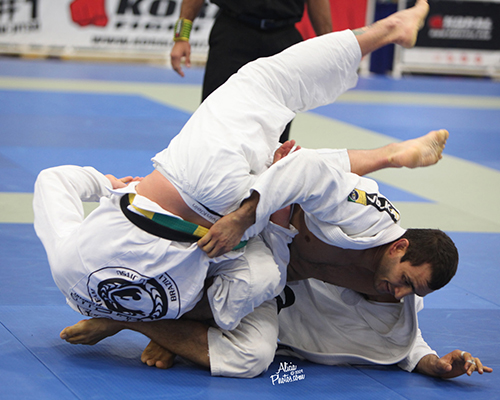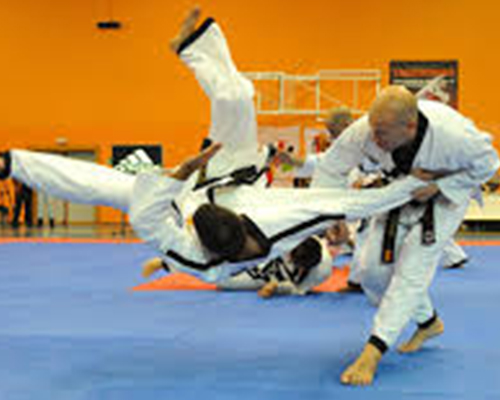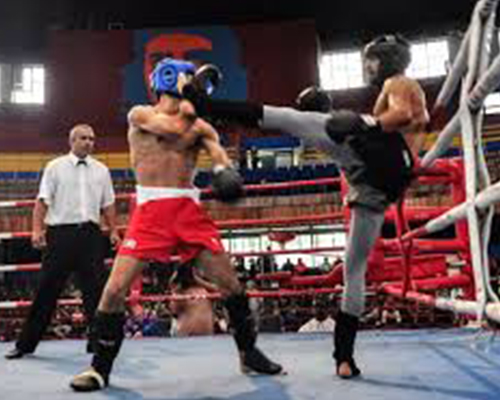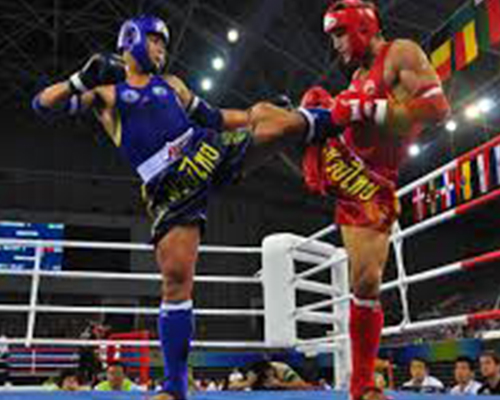Email id
combatgamesindia@hotmail.com
Phone Number
+91-9138313522
+91-9813313522

In hand-to-hand combat, grappling is a close
fighting technique used to gain a
physical advantage such as improving relative position, or causing injury to
the opponent. Grappling covers techniques used in many disciplines, styles
and martial arts that are practiced both as combat sports and for self-defense.
Grappling most commonly does not include striking or the use of weapons.
However, some fighting styles or martial arts known especially for their
grappling techniques teach tactics that include strikes and weapons either
alongside grappling or combined with it.
Grappling most commonly does not
include striking or the use of weapons.
However, some fighting styles or martial arts known especially for their
grappling techniques teach tactics that include strikes and weapons either
alongside grappling or combined with it.
In these arts, the object is either to take down and pin the
opponent, or
to catch the adversary in a specialized chokehold or joint lock which forces
him to submit and admit defeat or be rendered helpless (unconscious or broken
limbs).
There are two forms of dress for grappling that dictate pace and
style
of action: with a jacket, such as a gi or kurtka, and without (No-Gi). The
jacket, or "gi", form most often utilizes grips on the cloth to control the
opponent's body, while the "no-gi" form emphasizes body control of the torso
and head using only the natural holds provided by the body. The use of a jacket
is compulsory in judo competition, sambo competition, and most Brazilian
jiu-jitsu competition, as well as a variety of folk wrestling styles around the
world. Jackets are not used in many forms of wrestling, such as Olympic
Freestyle, Greco-Roman wrestling and Grappling.
Grappling techniques are also used in mixed martial arts along with
striking techniques. Strikes can be used to set up grappling techniques and
vice versa.

Hapkido also spelled hap ki do or hapki-do; is a Korean martial art. It is a form of self-defense that employs joint locks, grappling, and throwing techniques similar to those of other martial arts, as well as kicks, punches, and other striking attacks. It also teaches the use of traditional weapons, including knife, sword, rope, ssang juhl bong (nunchaku), cane (ji pang ee), short stick (dan bong), and middle-length staff, which vary in emphasis depending on the particular tradition examined.Hapkido employs both long-range and close-range fighting techniques, utilizing jumping kicks and percussive hand strikes at longer ranges, and pressure point strikes, joint locks, and throws at closer fighting distances. Hapkido emphasizes circular motion, redirection of force, and control of the opponent.
Practitioners seek to gain advantage over their
opponents through footwork and body positioning to incorporate the use of
leverage, avoiding the use of brute strength against brute strength.
The art was adapted from Daitō-ryū Aiki-jūjutsu as it was taught by Choi
Yong-Sool when he returned to Korea after World War II after having lived
in Japan for 30 years. This system was later combined by Choi´s disciples with
kicking and striking techniques of indigenous and contemporary arts such
as taekkyeon, and Tang Soo Do; as well as various throwing techniques
and ground fighting from Japanese Judo.

Jujutsu also known as jujitsu or Jiu-Jitsu, is a Japanese
martial art and a method of close combat for defeating an armed and armored
opponent in which one uses either a short wepon or none.
"Jū" can be translated to mean "gentle, soft, supple, flexible, pliable, or
yielding". "Jutsu" can be translated to mean "art" or "technique" and
represents manipulating the opponent's force against themselves rather than
confronting it with one's own force. Because striking against an armored
opponent proved ineffective, practitioners learned that the most efficient
methods for neutralizing an enemy took the form of pins, joint locks, and
throws. These techniques were developed around the principle of using an
attacker's energy against him, rather than directly opposing it.
There are many variations of the art, which leads to a diversity of approaches. Jujutsu schools may utilize all forms of grappling techniques to some degree (i.e. throwing, trapping, joint locks, holds, gouging, biting, disengagements, striking, and kicking). Jujutsu is practiced in both traditional and modern sports forms.

Kickboxing is a group of stand-up combat sports based
on kicking and punching, historically developed from karate mixed
with boxing. Kickboxing is practiced for self-defence, general fitness, or as
a contact sport.
Japanese kickboxing originated in the late 1950s, with competitions held since
then. American kickboxing originated in the 1970s and was brought to prominence
in September 1974, when the Professional Karate Association (PKA) held the
first World Championships. Historically, kickboxing can be considered a hybrid
martial art formed from the combination of elements of various traditional
styles.
Since kickboxing is a broad term, understanding the history can be somewhat
difficult. Some of the earliest forms of kickboxing included the
various Indochinese martial artsespecially muay boran, which developed into
modern muay thai.
I However, in terms of modern competition, it was during the
1950s that a Japanese karateka named Tatsuo Yamada first established an outline
of a new sport that combined karate and muay thai.
This was further explored during the early 1960s, when competitions between
karate and muay thai began, which allowed for rule modifications to take place.
By the middle of the decade the first true kickboxing events were being held
in Osaka.
Grappling techniques are also used in mixed martial arts along
with
By the 1970s and 1980s the sport had expanded beyond Japan and had reached
North America and Europe. It was during this time that many of the most
prominent governing bodies were formed.
In Japan the sport
was widely popular and was regularly broadcast on television before going into
a dark period during the 1980s.
In North
America the sport had unclear rules so kickboxing and full contact karate were
essentially the same sport.
In Europe the
sport found marginal success but did not thrive until the 1990s.
Since the 1990s the sport has been mostly dominated by the Japanese K-1
promotion, with some competition coming from other promotions and mostly
pre-existing governing bodies.
Along with the growing popularity in competition, there has been an increased
amount of participation and exposure in the mass media, fitness,
and self-defense.


Muay Thai or Thai boxing is a combat sport of Thailand that uses stand-up striking along with various clinching techniques. This discipline is known as the "Art of Eight Limbs" because it is characterized by the combined use of fists, elbows, knees and shins. Muay Thai became widespread internationally in the twentieth century, when practitioners from Thailand began competing in Kickboxing, mixed rules matches, as well as matches under Muay Thai rules around the world. The professional league is governed by The Professional Boxing Association of Thailand (P.A.T) sanctioned by The Sports Authority of Thailand (S.A.T.).
Formal Muay Thai techniques are divided into two
groups: mae mai, or major
techniques, and luk mai, or minor techniques. Muay Thai is often a fighting art
of attrition, where opponents exchange blows with one another. This is
certainly the case with traditional stylists in Thailand, but is a less popular
form of fighting in the contemporary world fighting circuit where the Thai
style of exchanging blow for blow is no longer favorable. Almost all techniques
in Muay Thai use the entire body movement, rotating the hip with each kick,
punch, elbow and block.
The punch techniques in Muay Thai were originally
quite.
limited, being crosses and a long (or lazy) circular strike made with a
straight (but not locked) arm and landing with the heel of the palm.
Cross-fertilization with Western boxing and western martial arts mean the full
range of western boxing punches are now used: lead jab, straight/cross, hook,
uppercut, shovel and corkscrew punches and overhands as well as hammer fists
and back fists.
There are two forms of dress for grappling that dictate pace and
As a tactic, body punching is used less in Muay Thai than most other striking
combat sports to avoid exposing the attacker's head to counter strikes from
knees or elbows. To utilize the range of targeting points, in keeping with the
center line theory, the fighter can use either the Western or Thai stance which
allows for either long range or short range attacks to be undertaken
effectively without compromising guard.

Sanda is contemporary Chinese art. A modern Fighting method,
sport and applicable component of Wushu/ Kung Fu influenced by traditional
Chinese Boxing, of Which takedowns & throws are legal in competition, as well
as all other sorts of striking (use of arms & legs). Sanda appears much like
Kickboxing or Muay Thai but includes many more grappling techniques. Sanda
developed in modern art to reduce the chance of serious injury.
“Amatur Sanda” allows kicks, punches and throws. A competition held in a
ring similar to a boxing ring in design but larger in dimension. As
professionals, they wear no protective gear except for gloves, cup and
mouthpiece and “Professional Sanda” allows knee and elbow strikes (Including to
the head) as well as kicking, punching and throwing.

In hand-to-hand combat, grappling is a close
fighting technique used to gain a
physical advantage such as improving relative position, or causing injury to
the opponent. Grappling covers techniques used in many disciplines, styles
and martial arts that are practiced both as combat sports and for self-defense.
Grappling most commonly does not include striking or the use of weapons.
However, some fighting styles or martial arts known especially for their
grappling techniques teach tactics that include strikes and weapons either
alongside grappling or combined with it.
Grappling most commonly does not
include striking or the use of weapons.
However, some fighting styles or martial arts known especially for their
grappling techniques teach tactics that include strikes and weapons either
alongside grappling or combined with it.
In these arts, the object is either to take down and pin the
opponent, or
to catch the adversary in a specialized chokehold or joint lock which forces
him to submit and admit defeat or be rendered helpless (unconscious or broken
limbs).
There are two forms of dress for grappling that dictate pace and
style
of action: with a jacket, such as a gi or kurtka, and without (No-Gi). The
jacket, or "gi", form most often utilizes grips on the cloth to control the
opponent's body, while the "no-gi" form emphasizes body control of the torso
and head using only the natural holds provided by the body. The use of a jacket
is compulsory in judo competition, sambo competition, and most Brazilian
jiu-jitsu competition, as well as a variety of folk wrestling styles around the
world. Jackets are not used in many forms of wrestling, such as Olympic
Freestyle, Greco-Roman wrestling and Grappling.
Grappling techniques are also used in mixed martial arts along with
striking techniques. Strikes can be used to set up grappling techniques and
vice versa.